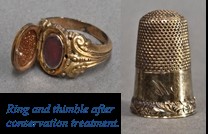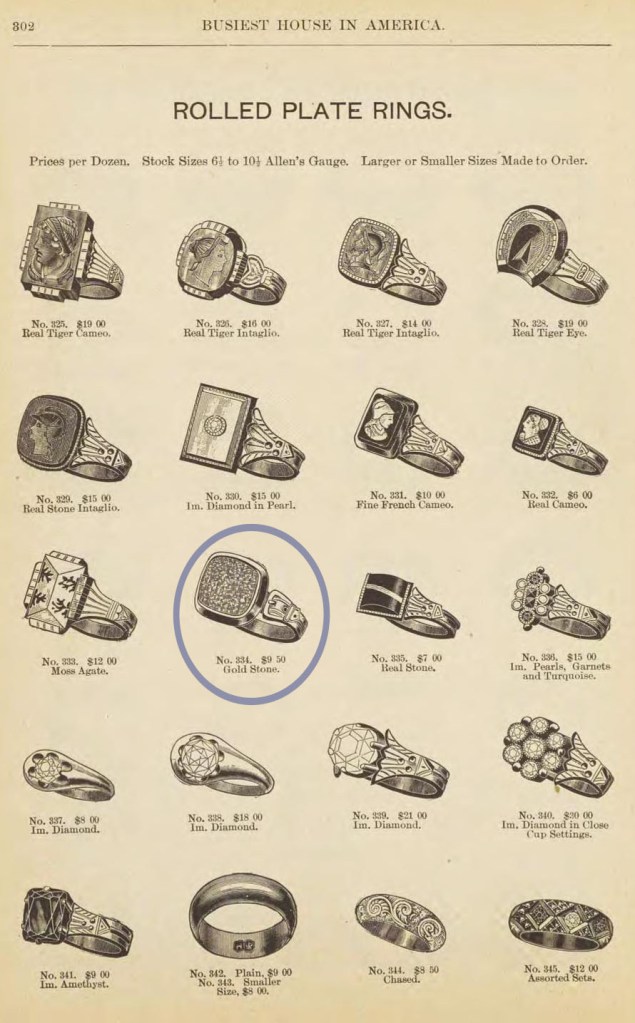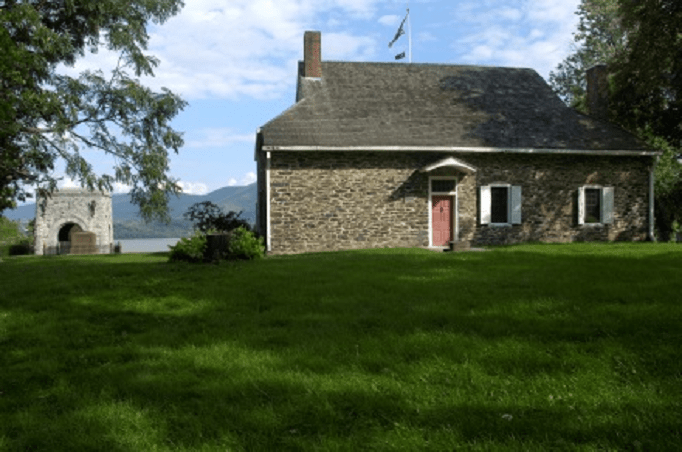Every house can tell stories about the people who have lived in it, and sometimes, that story is a mystery.
Last year, a worker at the Washington’s Headquarters State Historic Site in Newburgh was doing renovations when he reached behind an attic chimney and found something he was not expecting.
There, in a place not easily seen or reached, was a small paper box, discolored with age and wrapped with a now-brittle ribbon. And inside were a ring and a thimble, both made of gold and engraved with the single letter “M.”

The historic Hasbrouck House served as the headquarters for General George Washington from April 1781 until August 1782. And Washington’s wife Martha lived in the house during that time as well, so could the items have been associated with her?
As it turned out, that was not the answer. Further examination of the ring, thimble and box by State Parks conservation experts Amanda Massie, Heidi Miksch, and Michele Phillips from the State Parks Division of Historic Preservation determined the items dated between the 1850s to 1860s. That was long after the Washingtons had left, and in the era after the Hasbrouck House became the first publicly-owned historic site in the nation in 1850.
Both items were likely gifts meant to represent symbolic hopes for a happy domestic life, and for some reason, remained hidden in the attic for more than a century until discovered accidentally.

The thimble was made of 20-karat gold and likely was not meant to be routinely used for sewing. Often given as keepsakes to a bride-to-be, thimbles were recognized as a sign of romantic courtship in 19th century America. The practice goes back in history to the time of William Shakespeare.
Made of 10-12 karat gold, the ring was found to have a latched compartment, which inside held a tiny bit of red fabric, possibly silk, encased in glass. Such cloth keepsakes were common in the 19th century as a way to remember a loved one or special event.
So, who put the gifts there? And who was “M”? At this point, we do not know for sure … But State Parks researchers have unearthed some clues.
“First, we identified that stone in the ring was goldstone, which is actually glass with coppery flecks in it,” said Amanda Massie, curator of the Bureau of Historic Sites, based in Waterford. “To date the ring and thimble, I used historic trade catalogs from the 1880s and 1890s _ both jewelry catalogs and stores such as Sears Roebuck and Montgomery Ward to see if they had any items of the same style.”
Those searches yielded some similar objects, but none were identical. Massie then researched museum jewelry collections. “Here, I found more success in styles close to the ring with generic 19th century dates,” she said. “With the help of colleagues, I was able to contact curators who specialize in 19th century jewelry to better date the items. They believed that the ring and thimble dated from the 1850s to 1860s. Goldstone was very popular then and the thimble’s more simple design, suggested an earlier 19th century date.”


While the ring and thimble were not luxurious, they have been considered prized keepsakes to a person of average means at the time.
These rough dates suggested a possible time-frame as to when the objects might have been placed in the attic and who might have done it, with the letter “M” as the main guide.
“We looked in census records for both Hasbrouck family members and family members of the caretakers to find candidates,” Massie said. “Mary Hasbrouck Smith was the sister of the last owner of the house and lived in the house as a child. It is possible she left the ring and thimble in the house when it was handed over to the state, but it is more likely that it is from after the house became a museum in 1850.”
The first caretaker, Levi Woolsey, had a wife named Margaret and a daughter named Mary. There was also a servant in the house named Mary Murphey. “Any of these women could have hidden the ring and thimble. Another caretaker, Alfred Goodrich, had a daughter named May who also could be our “M” in question,” said Massie. “Though we do not know for certain who left the ring, we now have a wonderful treasure to add to the collections at our first State Historic Site. “

Parks staffers at the Hasbrouck House later brought this discovery to the attention of 9th grade honor students at the Newburgh Free Academy, who used it in a creative writing assignment on the “Paper Box Mystery.”
The Newburgh students imagined tragic tales of love unrequited or unfulfilled for how the ring and thimble came to be hidden and never retrieved.
Michael Abrams wrote a tale about a young man who bought the items for a girl that he wanted to propose to, only to be called up to fight and die in the Civil War, never to return to the home where he had hidden his treasure.
Another story, by student Megan Bell, imaged a young man named Edgar, who loved a girl named Mary, with the story told by Mary’s sister. Edgar had brought the box to the family’s home, and hidden it as a surprise. But he never got to give it, and was found dead in a nearby river only a few days later. And Mary “never found someone else she wanted to keep company with.”
And to student Anthony Manzi, the box’s secretive location suggested a romantic scavenger hunt gone sour. A suitor had hidden the ring and thimble in the attic, with instructions to his supposed sweetheart on how to find it, only to learn she was going with someone else, leaving him to abandon the box altogether. The spurned swain then “avoided every place she could possibly be. I never set foot in her house again.”
The story of the mystery box even managed to find its way around the globe _ a class from Australia heard about it in news reports and crafted their own stories. Australian teachers often seek out interesting stories from the United States to help teach American history, and this tale caught their interest.
Here is what the teacher wrote:
Hello, I am a primary school teacher in Melbourne, Australia and I showed my class the news story about the paper box that was found in the roof of the historic Washington building. We were hoping there might be an update on that find from local historians, but we cannot find any information online.
Can you help us out?
Kind regards, Linda V.
Most people might think that for a historic site like Washington’s Headquarters, opened to the public for almost 170 years, there is nothing left to learn and no mysteries to find. That is obviously not true, especially here at Washington’s Headquarters State Historic Site!
Our historic preservation experts here at State Parks have developed the clues we know so far about the two items in the mystery box. Whether the mystery is ever completely unraveled, only time will tell. History is alive, and with conservators, curators and other professionals at the helm, the journey into our past will continue.
It was in this house that the General announced the cease fire that signaled victory in the Revolutionary War, authored some of his thoughts for the new republic, and created the Badge of Military Merit, the forerunner of the Purple Heart awarded to all American service members wounded or killed.
To visit these and other objects in the collection, visit Washington’s Headquarters State Historic Site. For hours, directions and/or further information, call 845-562-1195 or visit us on Facebook at www.facebook.com/washingtonsheadquarters.
Post by Elyse B. Goldberg, Historic Site Manager, Washington’s Headquarters State Historic Site

